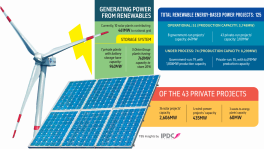Nike’s Carbon-Fiber Running Shoes Get Clearance for Olympics
All of Nike’s Vaporfly shoes currently available to the public satisfy both criteria of not having more than one carbon-fiber plate and the height of the sole not exceeding 40 millimeters

Nike Inc's high-tech running shoes will be permitted in competitions like the Olympics and World Championships, following a landmark ruling from track and field's international governing body.
World Athletics said Friday, however, that there is "sufficient evidence to raise concerns that the integrity of the sport might be threatened by the recent developments in shoe technology." It issued a few new restrictions on shoe construction and said it would do more research to see if more parameters are needed.
The two main new guidelines: Shoes cannot have more than one carbon-fiber plate, and the height of the sole cannot exceed 40 millimeters. All of Nike's Vaporfly shoes currently available to the public satisfy both those criteria. It's unclear whether prototypes like the ones worn recently by elite marathoner Eliud Kipchoge would also be allowed under the new rules.
"It is not our job to regulate the entire sports shoe market, but it is our duty to preserve the integrity of elite competition by ensuring that the shoes worn by elite athletes in competition do not offer any unfair assistance or advantage," World Athletics President Sebastian Coe said in a statement. "As we enter the Olympic year, we don't believe we can rule out shoes that have been generally available for a considerable period of time, but we can draw a line by prohibiting the use of shoes that go further than what is currently on the market while we investigate further."
Lightning Rod
Friday's ruling is at least a short-term boon to Nike and its professional athletes. Since the first Vaporfly shoe debuted in 2017, the technology has been a lightning rod for debate in the running community. Featuring thick foam, a steep forefoot and a carbon-fiber plate within the sole, the shoes were promised to increase efficiency -- and therefore speed -- by at least 4%. Over the course of a 2 hour, 10 minute marathon, that's a difference of more than five minutes.
The five fastest official marathons of all time have come in the shoes, all within the last two years. Two of the five fastest women's marathons were also in Vaporfly. When the Kenyan runner Kipchoge last year became the first person to run 26.2 miles in under two hours -- not an official time but nonetheless a barrier some thought impossible -- he was wearing the latest prototype of the shoe.
The Nike shoes, which sell to the public for $250, also became popular among serious amateur runners. The starting lines at marathons across the country are speckled with the neon orange, green and pink of Nike's Vaporfly models.
The shoes worn by Kipchoge aren't yet on sale to the public and it's unclear if they'll be allowed in the Olympics, since Nike hasn't given the sneakers' specifications. It's also not clear how the ruling might affect other companies that are close to releasing similar shoes of their own.
The success of runners in those Nike shoes put pressure on pros to sign with the Beaverton, Oregon-based sportswear giant. It also put pressure on smaller shoe companies to create sneakers with similar properties.
Little Impact
Analysts don't expect the approval to make much difference to Nike's bottom line. "Nike has not made a lot of these shoes," said Matt Powell, NPD Group's senior industry adviser for sports, before the decision was announced. "Impact will be minimal."
A move of this sort by World Athletics, formerly the International Association of Athletics Federations, isn't without precedent. About a decade ago, Speedo International Ltd. unveiled a full-body swimsuit that radically changed competitive swimming. More than 100 world records were broken in the Speedo suit or those like it, leading some to compare it to doping. The Federation Internationale de Natation, swimming's governing body, voted overwhelmingly in 2009 to ban the high-tech suits, imposing restrictions on the materials and the amount of the body they could cover.
For decades, World Athletics has been intentionally vague about what footwear is and isn't allowed. The governing body's guidelines said only that shoes "must not be constructed so as to give athletes any unfair assistance or advantage." It later added that the shoes must be "reasonably available" to the public.
Facing heat over the Vaporfly shoes, World Athletics's Technical Committee formed a working group last year to help clarify the rules. The group, which included athletes, scientists and ethics experts, sought a middle ground between innovation and fairness.
Nike isn't the only company making shoes that might be affected. In the wake of the Vaporfly's success, a number of other companies have released shoes with similar properties. Deckers Outdoor Corp.'s Hoka released its own $180 carbon-fiber shoe last May. Berkshire Hathaway Inc.'s Brooks is planning a $250 elite running shoe this year; Saucony Inc. has had one in the works for more than two years.


 Keep updated, follow The Business Standard's Google news channel
Keep updated, follow The Business Standard's Google news channel
















